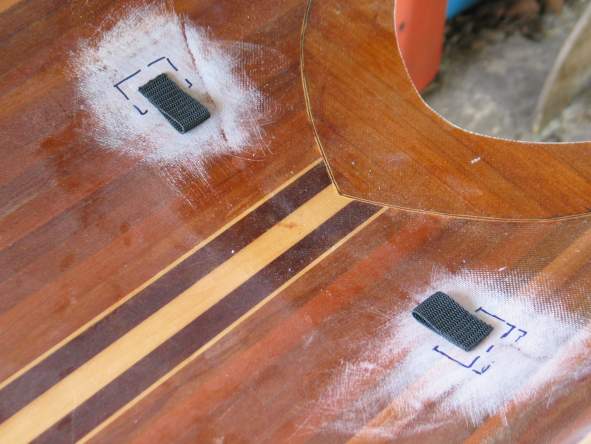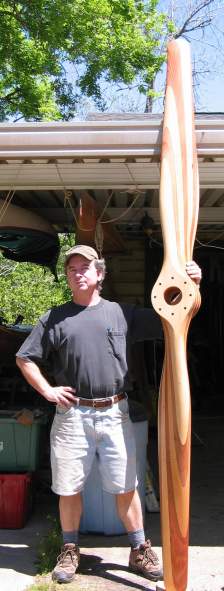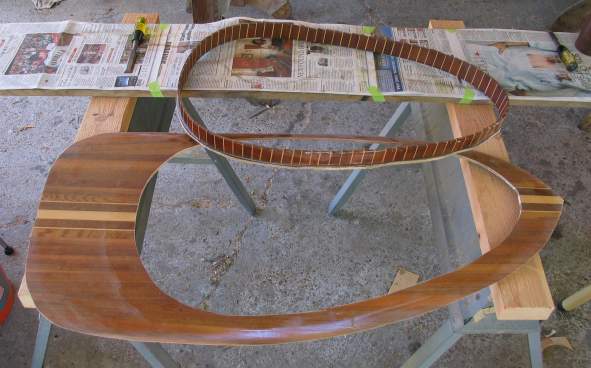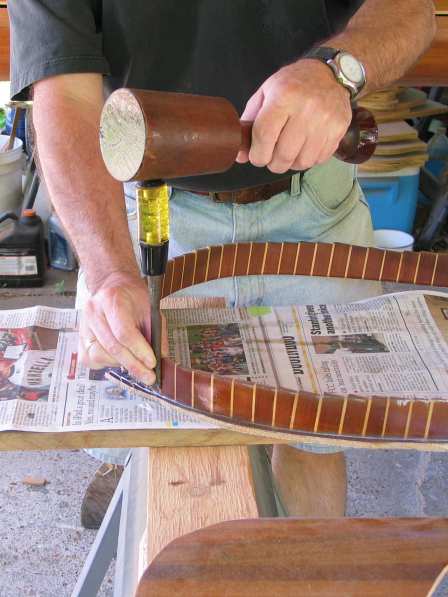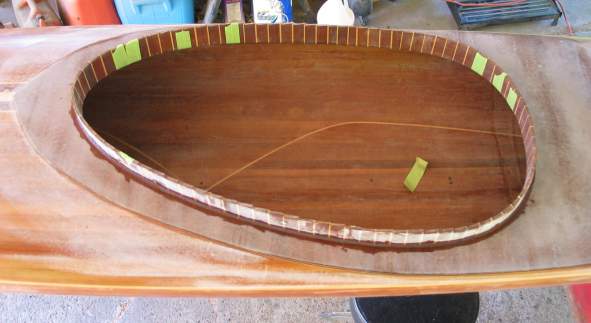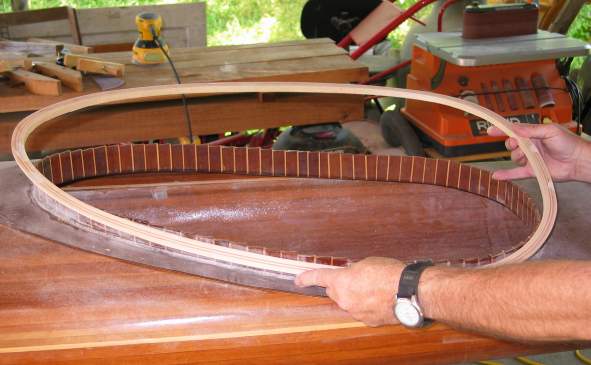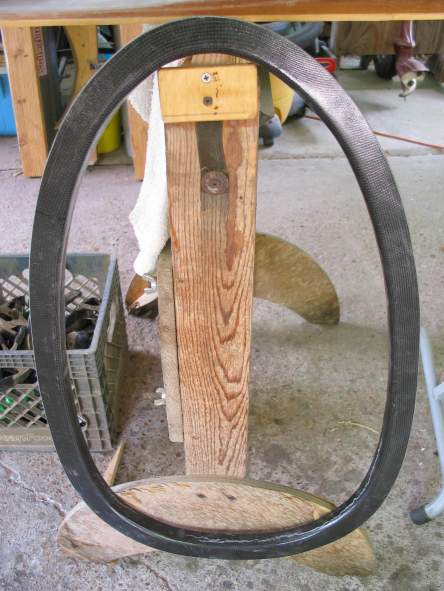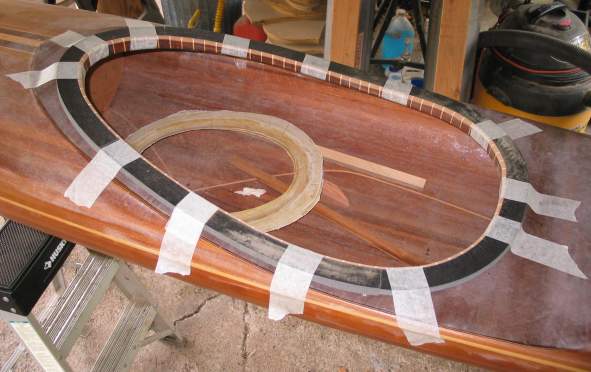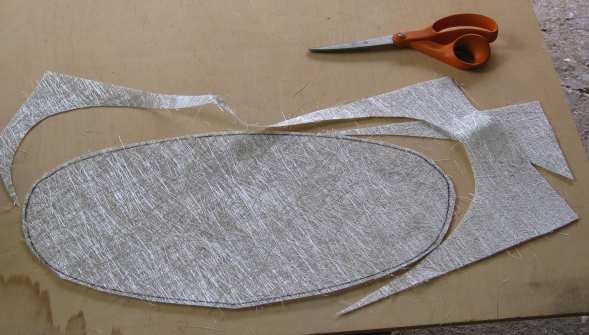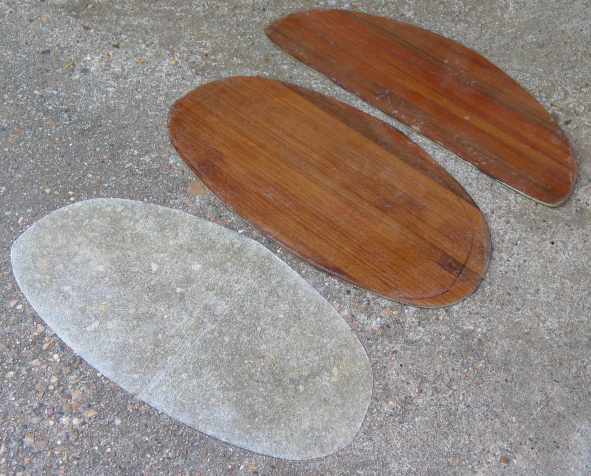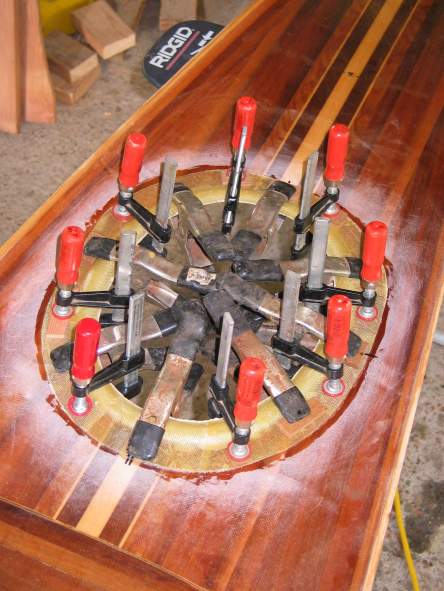|
The conventional wisdom is to lay down your sacrificial
gasket material, then lay in thickened epoxy fillets around 'em to help the glass
cloth drape over 'em, and that's what I started to do. But it's just too
dang heavy! If you want results that'll never see forty pounds, and prefer
mid- to low-thirties, you simply refuse to
accept any excess weight you can possibly do without. So I pulled the
weatherstrip back out, pitched the batch of dookie-schmutz, and started over. I
hate to waste stuff, but this is going to be around for a long time
and I'd just as soon get it right.
Which brings us to Twist Number Two: Instead
of epoxy fillets, I laid down some wider weatherstrip, then used old fashioned
double-edged safety razors to bevel the foam gasket itself. You need an
insanely sharp blade to pull this off, and those relics of the past, which
continue to be readily available at the local grocer's, fill the bill. I
have no idea why they were called "safety" razors; they're
feloniously dangerous any way you slice 'em .... so to speak. I mean, does
anybody really shave with those things anymore, or are they all being sold
to people like me, who use them to trim deer hair flies for fly fishing? I
tell ya, I'm old enough to remember those things well; they were often kept in the same
drawer as the styptic pencils . . . remember those? No? Well, they're
little white pencil sticks that you rub on the nicks from the safety razor
to stop the bleeding. And when you touch 'em to the
wound, wowee, it stings like you held a wasp to your face. Boy, now them's
was the good old days, fun, fun, fun. In the
meantime, if there's a way to draw blood with a Mach 3, I have yet to
discover it. Safety razor my foot. What? You say you came
here to hear
about boat building? Stop interrupting. . . . |

|


